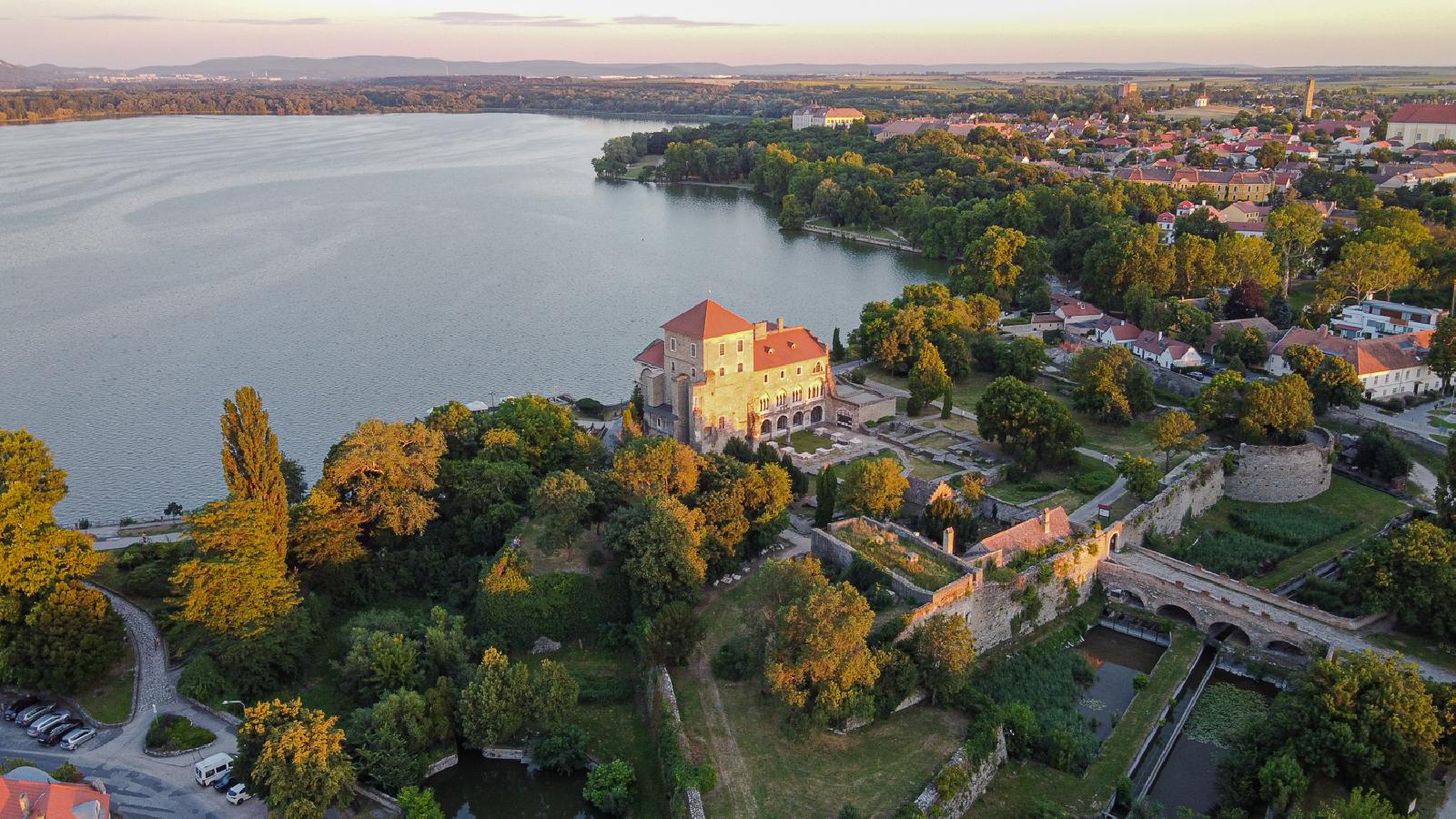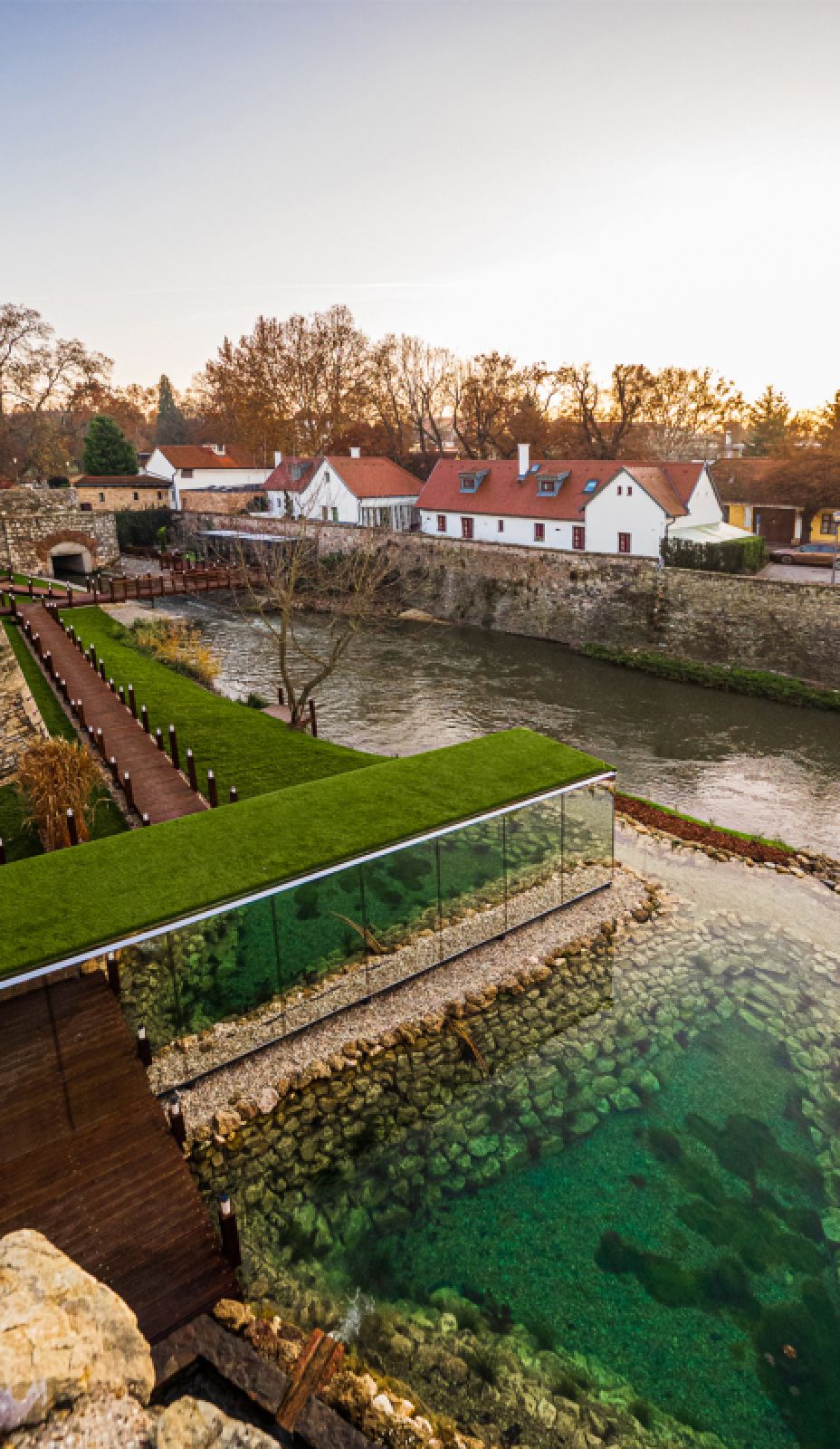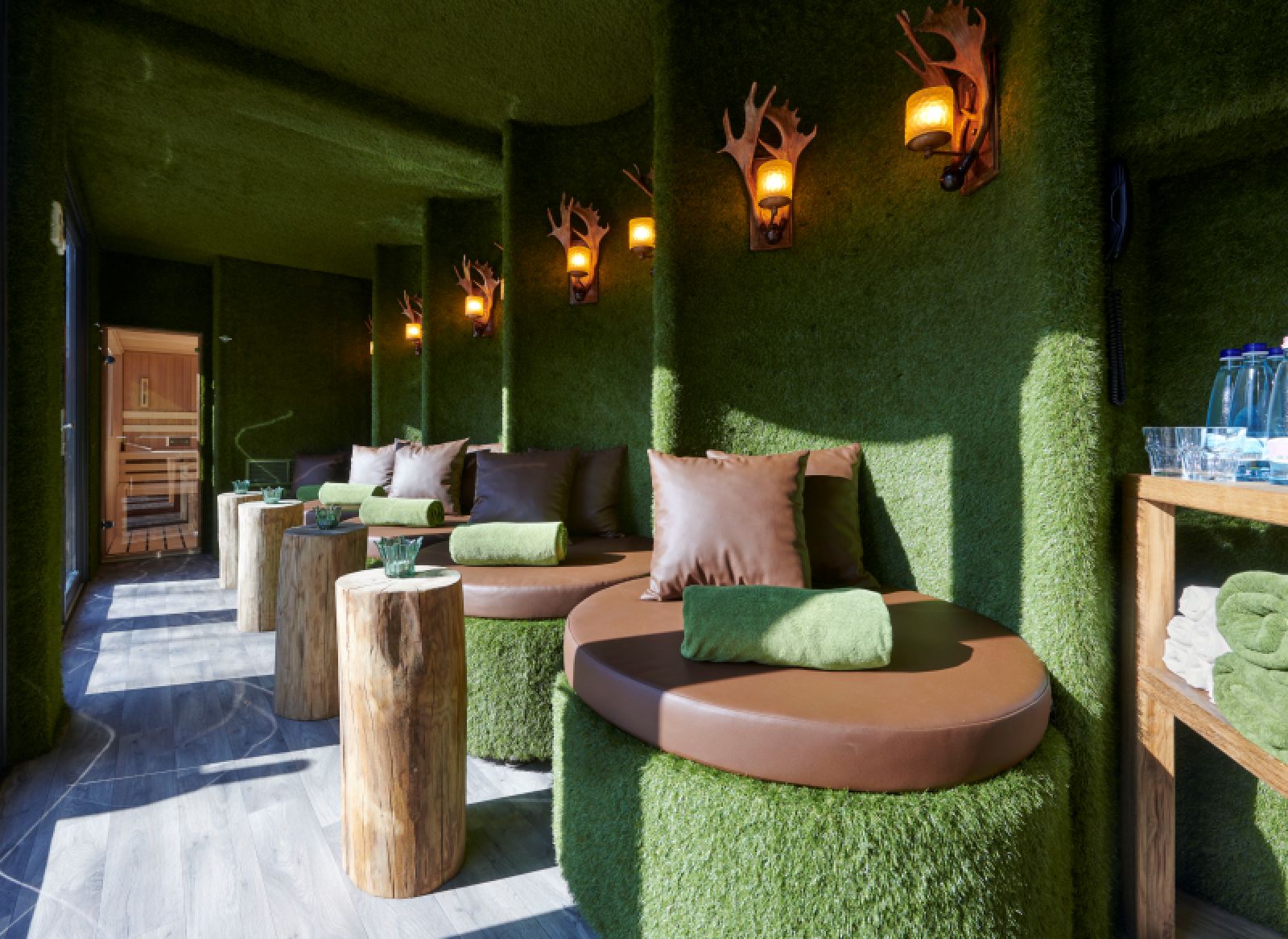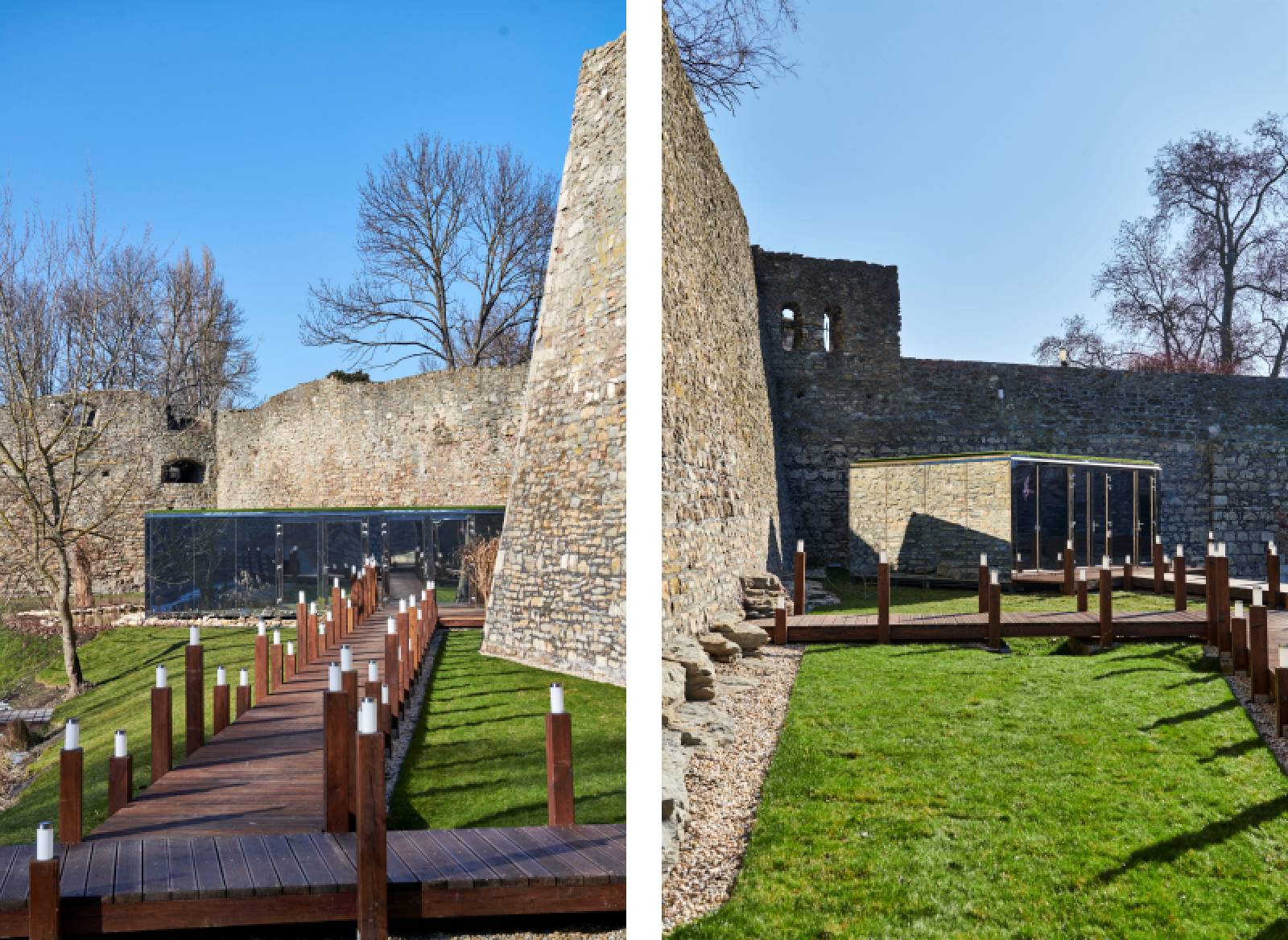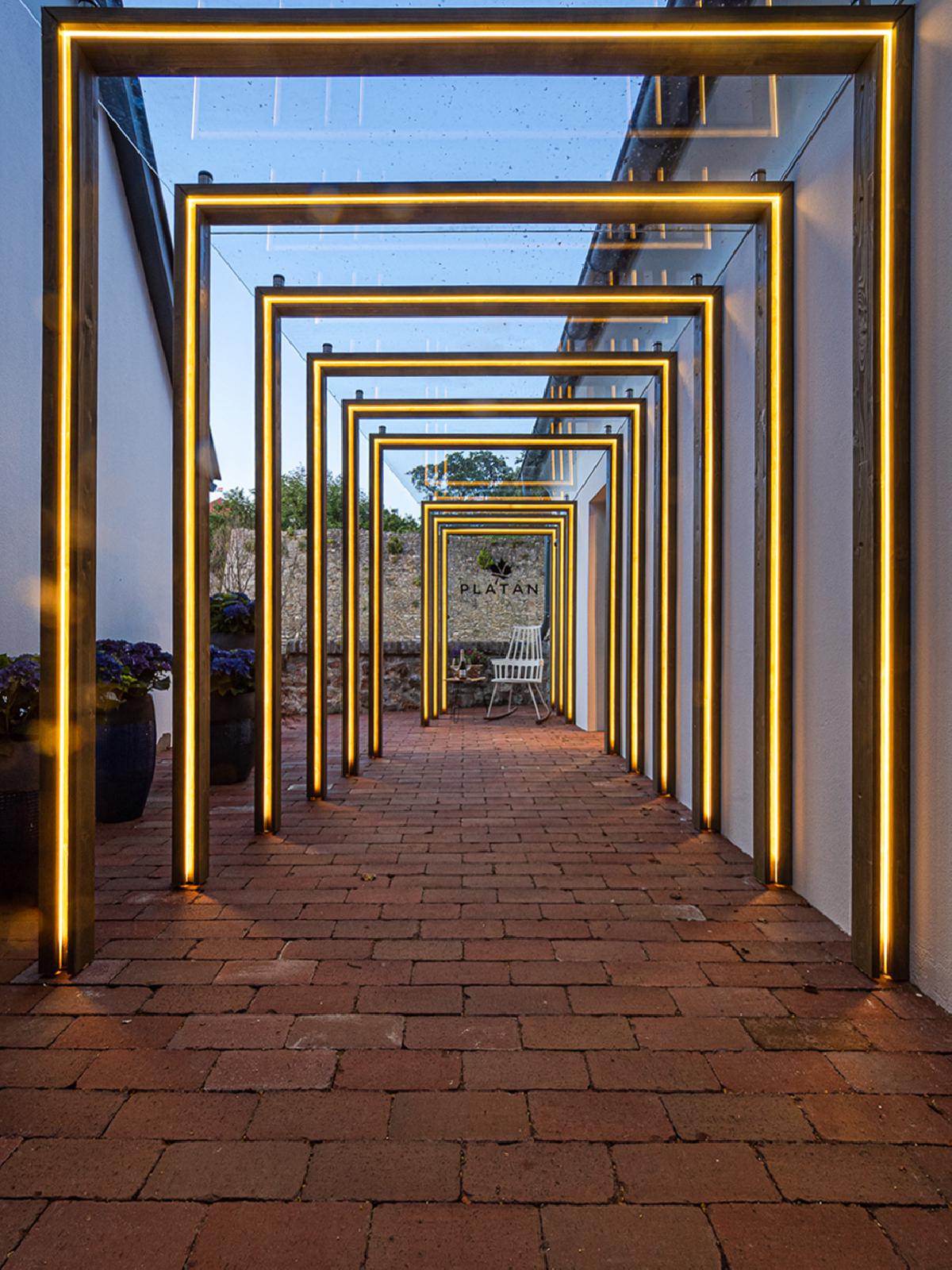The Platan, located beside the tranquil Old Lake in Tata, Hungary, has been renewed and reinvigorated by this very understanding. What was once a humble but reputed eatery built into the servant’s quarters of the Esterhazy family’s estate next to the royal castle, has now been transformed into a gastronomic landmark with renowned chef, Istvan Pesti, placed at the heart of the idea. This year the entire Platan property relaunched to a new identity thanks to the efforts of interior designer Zoltan Varro.
Leveraging the downtime created by a global pandemic as an opportunity, the team behind the combined bistro, restaurant and guest house took the chance to refurbish everything for a top-to-bottom experience of elegance and grandeur. When approaching this new look, Zoltan Varro knew it was crucial to draw upon the three things that were integral to the Platan: the nearby historic Esterhazy Palace, the natural beauty of the lake, and the artisanal gastronomy of chef Istvan Pesti.
The first of those is most clearly seen in the structure of the property itself. Once used as a servant’s quarters housing the essential staff that attended the nobles and their guests visiting the palace that neighbour the property, the building was required to be retained as close to how it would’ve been originally. The guest house itself highlights the inspiration of the property’s history the most, with regal wallpaper and ornate touches intended to hark back to a time of kings and counts.
Dark wooden fixtures and fittings give each room of the guest house a feeling of staying within a nobleman’s salon, with furniture that calls back to elegant equivalents that can be seen in the baroque décor of the Esterhazy Palace, while still ensuring enough modernity to be fresh and relevant. For Zoltan Varro, it is inspired by the restaurant’s chef, Istvan Pesti, whose own gastronomic creations are empowered by the surrounding natural landscape and are said to be treats both for the eyes and the stomach.
But if the interiors hope to create a sense of baroque regality, then the adjoining spa presents a more contemporary attitude towards exclusivity. Overlooked by the old castle walls and embedded within the grounds that once acted as a defensive moat, a pair of oblong, mirrored structures house recreational spaces that are at once visible and concealed from passing tourists that might peer down at the flowing stream from the bridge over the moat.
Clever reflective windows mean guests can enjoy a moment of relaxation surrounded by carefully tended gardens, while onlookers will see nothing but the reflection of the stonework of the castle walls. Inspired by the contemporary design philosophy of repurposing heritage sites that can no longer perform their function, Zoltan Varro created a camouflaged spa within the old moat grounds – a worldwide first of its kind. It’s an area only accessible to visitors of the Platan guest house and yet can be viewed by any of the numerous tourists that pass by.
It’s a unique sense of exclusivity, one that mirrors its heritage while still offering isolated comfort in an otherwise open and publicly visible space. The added challenge of ensuring minimal impact on the historical space was an important one, with Zoltan Varro’s solution being to use floating structures that sit on the land but, if required, could be removed without any permanent damage to the castle grounds. The castle walls next to the area has also been refurbished, thus protecting the medieval walls from further deterioration, which will now be visible at night with sophisticated yet subtle lighting.
Greater still, much of the original fauna is to be recultivated in cooperation with local environmentalists, not only providing serene sights for visitors of the spa but to emphasise the fleeting nature of these inventive floating structures. Illustrations of birds of prey, created by a wildlife artist, will also be placed on the mirrored walls to protect any birds from an unexpected collision. Everything about Platan is built around gastronomy at its centre.
With direct views over the Old Lake, the ground floor houses the bistro portion of the property, readily accessible to tourists for an elegant yet comfortable dining experience, whether it’s impeccable meals prepared by Istvan Pesti and his team or just coffee and cakes before exploring the lake. Downstairs, however, is the beating heart of Zoltan Varro’s grand vision. Once a dusty cellar, it has been transformed into a bright, opulent and grand environment, each room colour coded in the same ways that European nobility had once done with their own manor homes and palaces.
The blue room is the breakfast suite, for example, while the green room is a drinking salon. At the end of the cellar is the final destination, the place where the gastronomic tale ends and the vision of Platan’s redesign is fully executed. Here is where the guests looking for a fine dining experience will be escorted, offering a modern, high-end yet intimate feeling of exclusivity, separated from the bustle with tables lit like altars. It beckons visitors from down the corridor, but only those who know of the exclusive quality that awaits will be aware, and will likely already have travelled to Tata just for this special occasion. Source and photos Courtesy of Zerocom.


